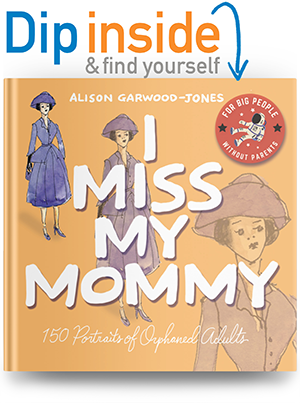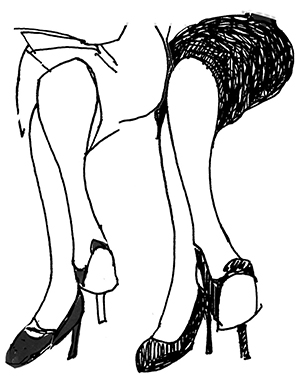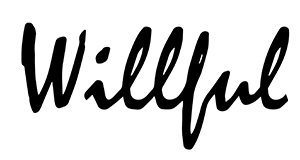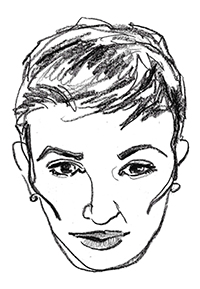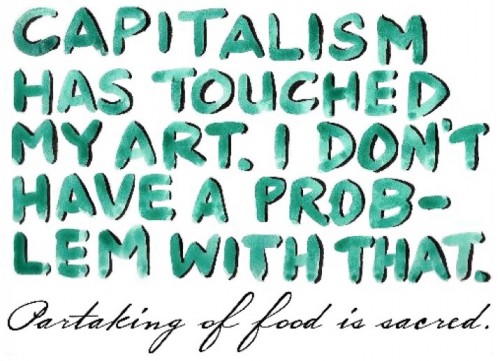
Where does content live?
November 30, 2015
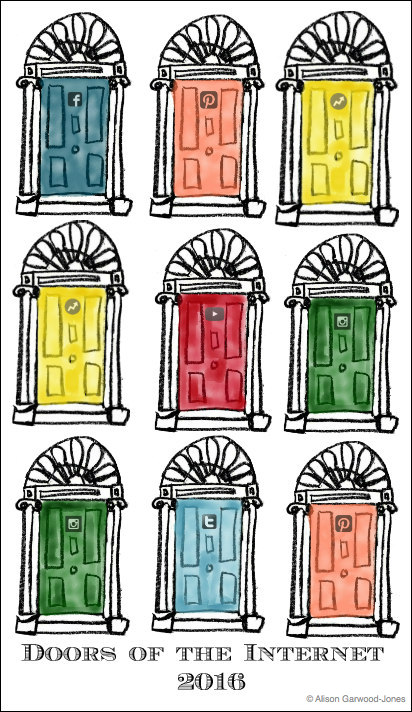 Don’t knock on one door, knock on all. Illustration by Alison Garwood-Jones
Don’t knock on one door, knock on all. Illustration by Alison Garwood-Jones
Creativity has always been an insistent force in me. But, these days I spend as much time studying the processes for sharing my work as I do making stuff.
Tell me if you’ve thought this too: Hemingway, O’Keefe and Auden weren’t yanked around by technology. They lived at a time when artists could just get on with the business of making. How they got their stuff in front of the public involved the same set-ups and follow-throughs used by creative souls before them and for decades after them. Sure, the usual stuff of life divided their energies — relationship dramas, solvency issues, rejection, war — but the New York mailing address for Scribner’s Sons was solid. And the configuration of the exhibition spaces at Alfred Stieglitz’s 291 Gallery was a constant for all artists who dared to pitch their stuff to the old man.
Today, just when you master one way of getting your stuff seen, a new strategy replaces it with changes that could either tip us over or wipe us out. Fifteen years ago, Hemingway’s strategy of crafting and feeding pitches to editors was still the way to go. A dozen years ago, blogging took over. That lasted for another decade before readers’ habits changed again. Blogs, like magazines, were built around the idea of tightly controlled media consumption. Remember how we all aspired to be “Master Curators” of “destination” websites? Come to us, we said, every time we included a web throw on our business cards or email signatures. Keep us in your conscience. Please. While it took a while, writers and brands eventually learned to assign their blog URLs the same canonical importance once reserved for print. But the readers didn’t care. They had already moved on again. In case you’re wondering why, it’s because they don’t have the patience to wait for our websites to upload on their phone screens.
Right now, destination websites are out and “distributed content” is in. Sites like Buzzfeed have already cut the coded string that used to bundle their content exclusively inside their websites and scattered their stories across a whole array of native mobile apps and social media feeds. What does this mean for the rest of us? It means that the most adaptable publishers, big and small, are taking their content and going where their readers are instead of trying to call them back to their websites for the full story.
If you want to learn more, read Buzzfeed EIC Jonah Peretti’s conversation with Nilay Patel published in The Verge last December. Tara Hunt describes our current state of affairs (the demise of destination websites and the primacy of shareable content) in this beautifully simple LinkedIn post and video.
Both Peretti and Hunt inspired me to dust off my graphic storytelling skills. For writers and magazine publishers, the prospect of losing our permanent homes is ulcer-inducing.
Here is my YouTubey take on our new reality:
George Jetson
November 18, 2015
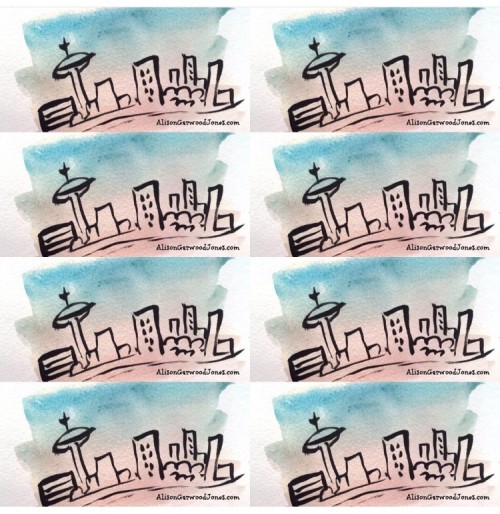
Did you know that when the The Jetsons debuted in 1962, George was a Digital Index Operator at Spacely Space Sprockets Inc.?
That job was funny then, but weirdly familiar now, like so many gadgets and scenarios in that great cartoon.
If you really want to geek out, George earned his living pushing a series of buttons on the Referential Unisonic Digital Indexer Machine, a task he seemed to carry out just fine with his feet up on his desk.
After a three-hour workday, George flew his saucer back to his Skypad Apartment in Orbit City (not always abiding by the 2500 mile an hour speed limit), and was greeted at the door by Jane, Elroy, Judy, Astro and Rosie, their wisecracking maid.
I drew this picture of Toronto down at the beach last summer using Lake Ontario water and a Pentel Brush Pen that illustrator Sydney Smith suggested I try. It has an Orbit City feel to it.
When I looked at the sunset last night, I remembered my drawing, did a quick search for it in my sketchbooks and posted it just as the light was fading over the CN Tower.
After dinner, naturally, I started watching old Jetsons episodes on my computer. The repetitive sound track for that show brought my family back to me and placed me on the carpet with my brothers in front of our flickering Zenith TV in our Danish Modern living room in Dundas, Ontario. Flintstones music has the same effect on me: family.
I’ll be watching another episode of The Jetsons tonight. And let it be said, head animators William Hanna and Joseph Barbera showed a level of creativity and problem solving (how do the Jetsons get their dinner, make phone calls, get home from work, etc.) that was, as Judy Jetson would say, “Out of this world!!!”
Lean In Canada Illustrations
November 4, 2015
Last Tuesday, the organizers of Lean In Canada hosted a gathering to brain storm new ways to tackle gender bias in the workplace. Noelle Richadrson, a leading voice in Canada in gender and racial diversity, led the discussion. I was brought on board to illustrate the questions and ideas that were raised.
My hearty thanks to Pam Sethi, Sarah Kwan, Christina Rupsingh and Despina Zanganas for pulling me into the fold. I salute your hard work!
I created two boards. Here they are:
Here is the static option as well:
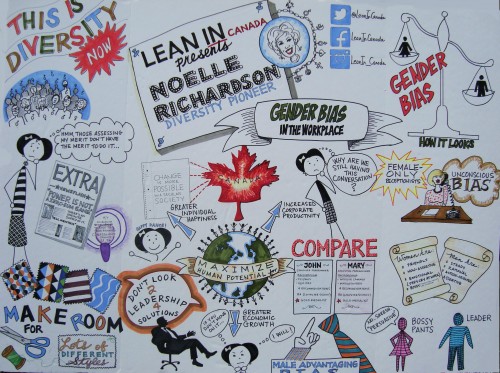
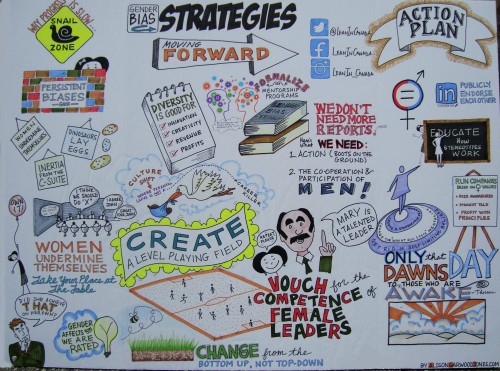
My blogging strategy keeps changing — and so must yours
October 26, 2015
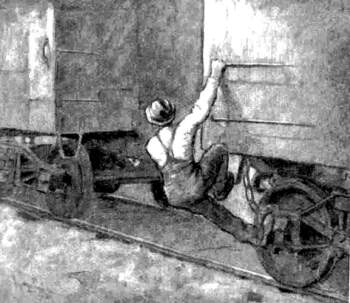
Back in early February, I wrote a blog post that created a tiny stir in my journalism circle. It was about how news is getting more “mobile.” And by “mobile” I don’t only mean smart phones (although, they are massively relevant to what’s happening), I mean that news organizations are now having to abandon their websites, package up their stories and editorial sections, throw them in rucksack and move — no run! — to all the places their readers are now. Read the rest of this entry »
Enid, Bruce & Pierre
October 16, 2015
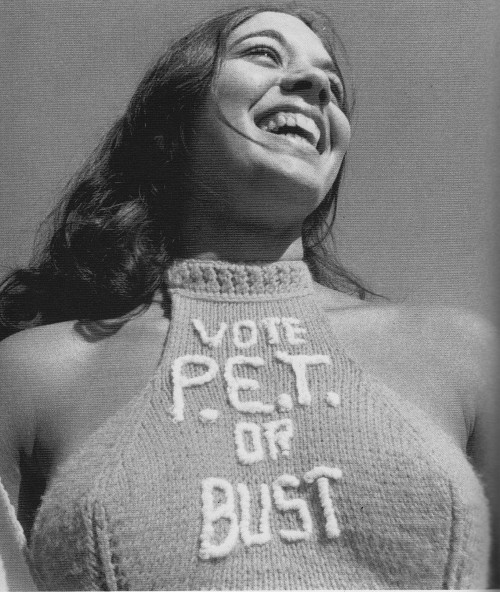
“Hey, what’s up with Fergie?” asked Jacob Meier, one of the boys in Enid Ferguson’s Grade 9 Canadian history class. Someone had to explain her absence. It was a Wednesday morning at Rideau Academy and Enid had called in sick one day after dragging herself to school in lumpy drawstring track pants and shock-absorbing runners. Jacob, the runt of the class, was ballsy despite his size (a future lawyer, for sure) and kept pressing his classmates for answers.
“So, what’s up with Fergie?”
“How should we know?” snarked Queen Bee, Jessica Twombey, speaking for all the girls.
Jacob was only asking what every boy in the school was wondering. All of them — the straight and the eventually gay — had a vested interest in Enid’s breasts, legs, hair and the fashionable wardrobe that concealed this landscape. Enid had always gravitated to high-heeled boots, fitted skirts, clingy turtlenecks and one-of-a-kind necklaces — a new one every day. There were strands of polished stones from South Africa (Tiger’s eye, Malachite and Carnelian), as well as winking crystals and aboriginal beads purchased during Via Rail train stops across Canada. She also wore what the boys called, “her love nuts”: whole walnuts, acorns and Brazil nuts in the shell that some craftsperson had drilled holes through and strung together with invisible fishing line. Enid liked her necklaces long so they followed the rise of her breasts and dangled over the edge, swinging midair like a rock climber in trouble. The metronome action of her necklaces against her breasts lulled the boys into a trance through most of Confederation.
Now nondescript tops and track pants were obscuring her lines. The necklaces were gone, put back in some mysterious storage spot. The boys felt hurt and abandoned by this recent turn of events. The girls, meanwhile, intuited something was up and feared for their futures. “It looks like Bruce is pickin’ out her clothes?” concluded Jacob, still trying to solve this case. What other excuse could she possibly have for dressing like this?
Bruce was Enid’s husband. He taught phys-ed to the Grade 9-12 boys, showing them how to kick, jump, swat and tackle like men. An ex-fullback for the Ottawa Chargers, Bruce was big: 6’3”, 240 lb with triangular calves and hairy forearms whose crisscrossing tendons sprung to life with the slightest exertion. He had a full head of dark hair and a thick, well-groomed moustache threaded with ginger spikes. And apart from some greying chest hair, bad knees and too many matching track suits, Bruce felt good about life. Sure his body still smarted from tackles inflicted 25 seasons ago, but it wasn’t anything that Ibuprofen and yoga couldn’t fix. Overall, there was an ease about him that one could only pinpoint to his iconic status. Bruce was one of the lucky few to have sipped champagne from the Grey Cup. Every day, the halls of the school echoed with the cry, “BROOOOOSSS!” This was how the boys genuflected in the presence of a national sports hero. For his part, Bruce mostly deflected the adulation. Sometimes he conceded, though, cracking a half-smile and then squinting at the horizon to make it stop.
Bruce was a man in love. A decade of ups and downs with Enid had somehow convinced him — this Hummer of a guy — that he was lucky to have been chosen by her. At lunch, regardless of how Enid had treated him at breakfast, Bruce always crossed the floor of the school cafeteria — the entire room following him with their eyes — and gallantly pressed a long kiss on his wife’s cheek. “Hey, I haven’t seen you for six hours,” he’d whisper in her ear, while his hand resisted sliding down to cup her rear in front of the entire student body. How Enid responded was hit and miss. When it worked, she turned her head and fed his ear with something that made his moustache pull back to reveal a set of very straight, white teeth. One or two cocky souls usually clapped and whistled when he was scoring (Jacob Meier, or some other dedicated extrovert). Mostly, though, everyone just watched the couple’s movements with the mouth-breathing intensity of a Prime Time miniseries.
Bruce was husband number three. Maybe it was sports that had taught him never to walk away from a challenge. Or, it could have been the Buddhist readings that helped him make the transition away from pro ball. For a jock, he had a remarkably deft touch with women. Well, a woman. Enid. Husbands number one and two “were god damn wimps” (Enid’s words). They started out worshipful, but soon decided that second fiddle was an unnatural place for a man to be. Enid walked the moment they tried to write her schedule and control the attention other men lavished on her. They begged her to return, but her buttery leather boots were long gone.
Bruce made none of the mistakes of husbands one and two, but, still, he was worried. His up-for-anything bride — the same girl who wore red and white patent leather go-go boots to Expo 67 before switching to bare feet, a lace mini dress and a crown of wildflowers for her first wedding — was sputtering in her comet-like trajectory through life. Like most guys, Bruce knew what Enid was feeling was coming. He had just hoped it wouldn’t be so soon, if 49 could be considered too soon.
Standing in Bruce’s grey track pants before her grade nines, with sweat trickling down her temples and what looked like a plop of dried toothpaste on her top, Enid was leading a discussion on the October Crisis and defending her man — “Um, excuse me, guys, but Prime Minister Trudeau crushed civil liberties to protect civil liberties” — when a sharp pain crossed her abdomen. Fearing she would lose it, she instructed her students to review Chapter 7 in their text book and made a run for the toilet. Ever determined, she still got in a parting shot: “Uchh, the Separatists can leave for all I care.” Slam went the classroom door.
The air was still aswirl after her mad dash to the bathroom. The keeners in the front row turned in their seats to look at the slackers in the back row, then everyone in between. No one shouted, “Party!” or left the classroom to light up on the smoking island out back in the school parking lot. Enid had slammed the door to keep them in. They just stared at each other, shrugged, and turned back around to get on with their readings. Without Fergie there to witness their quips, there was no point in acting up.
Mr. Trudeau would have been bemused by this episode. He needed all the support he could get standing up to the Separatists. But then he never had cramps like Enid’s. Maybe the occasional pulled muscle from tough frisbee catches or the odd paper cut from the stacks of parliamentary documents piling up on his desk, all of which he read from front to back. Nothing seemed to sideline Pierre. He ran at life with the energy of a 17-year old in love. For a long time, Enid wanted to be the one Pierre ran to (not for anything serious, of course). In her prime, she looked better than Margaret in a bikini, if that were possible. Moreover, she was the one with the real “connaissance intellectuelle.” And Pierre knew it.
Enid was that girl from the Summer of ’72 who stood on the sidelines during the height of Trudeaumania wearing a tight sleeveless sweater embroidered with the slogan, “Vote for P.E.T. or BUST” across her untethered breasts. Nick, president of the Young Liberals of Canada, a fellow Ph.D candidate and Enid’s first husband, was standing right beside her at a gathering on the Hill when photographer Duncan Cameron pushed past everyone to get to her. Dropping to one knee, he captured Enid’s form against a diamond clear sky. The country went nuts wondering, who’s that girl?
Trudeau smiled when he was handed the paper the next day. He was still smiling fifteen years later when he instructed one of his assistants to contact the National Archives to secure the rights to include Enid’s picture in his memoir, Thoughts on a Just Society. On p. 121, there was Enid right below a photo of Pierre doing a double tuck off a high board into a hotel pool and right beside a shot of Barbra Streisand leading him at intermission through the crowded lobby of the National Arts Centre.
Like Maggie, Babs, Liona, Margo, Gale and Kim, Enid had her own file in the Prime Minister’s mind. Ultimately, though, she would go on to write about him instead of being a source of light entertainment. The sweater paved the way to many interviews with the Prime Minister for both her books: Being Canadian: It Beats the Alternative (a love letter to her country) and Profiles in Compromise (a compilation of her best ass-kicking columns for Maclean’s). Every time Pierre opened the door for Enid to his art deco home on Pine Ave. in Montréal, he made it clear that he thought it humorously wonderful she had become a historian. Enid forgave him for his vague patronizing and let the tape recorder roll. Post-interview, she repeatedly turned down his offer of a sauna, but did say yes to sharing a joint with him because it turned his condescension into full-on camaraderie, and resulted in some deep philosophical conversations and a ton of good quotes. For hours, their laugher bounced off the marble surfaces inside his art deco home.
The boys in Enid’s classes all knew about her untethered past. Most of them kept a xerox of “ Bust a Vote,” as they called it, in the back of their binders. Some even went to the trouble of laminating their pictures. As a result, the school’s copy of Thoughts on a Just Society did more splits than Elfi Schlegel. The strain of all that photocopying on the book finally proved too much for its binding and it eventually cracked into two separate parts right at page 121. “No, it lifted and separated,” snickered the boys. The memoir had to be replaced twice by Mrs. Harstone, the school librarian. After that she kept the newest copy of Trudeau’s memoir on the reference shelf behind the check-out desk and only granted signing privileges to students with written permission from the head of the History Department. As a result, photocopies of photocopies of Fergie proliferated down the grades making her outlines harder and harder to make out.
*Every effort was made to source the copyright holders of the photo, “Vote P.E.T. or Bust” (I have an extensive collection of Canadian history picture books and none did). If anyone knows, please notify me at alison.garwoodjones@gmail.com
Planet freelance
October 6, 2015
I stick up for freelancers. They inspire me. They’re my tribe.
I don’t know if what I say disturbs the order. When there are still more men making $100 million a month on Wall Street flipping real estate than there are Occupy protests, I’d say … probably not.
Every day, we freelancers show up to write, draw, scratch our chins, review our sins, check our email and push through our lower/middle class existential crises. Hope is like oxygen to us, although to admit that would be a bit pathetic.
So last night I threw several bottles containing messages into the Twitter stream. I was the guest on Marketer Monday, a Tweet Chat held every Monday between 8-9pm. Moderator Karima-Catherine Goundiam interviews key industry leaders on topics ranging from business, marketing and social media and it attracts a large and active crowd from North America and the UK.
The topic I proposed was: Show What You Want To Be Known For: Why Monetizing Your Creativity is Easier in a Digital Age. Karima asked me to tszuj up the Marketer Monday mascot, so I put a brush and palette on the end of his wings:
Join us tomorrow night at 8PM for #mmchat with @AlisonGJ. #mmchat is getting CREATIVE ;) @karimacatherine @Maja_Bilic pic.twitter.com/Bbb1bIxcnY
— MMchat (@MarketerMonday_) October 5, 2015
Here’s a round up of tweets. In short, getting discovered is way easier when you’re online. But you have to be a steely negotiator.
A4: lawyers don’t hesitate 2 charge a handsome hourly fee.Why should #creatives? We R hired b/c clients lack the time or talent. #mmchat
— Alison Garwood-Jones (@AlisonGJ) October 6, 2015
A4: Tonight’s mantra: Be professional. Know your worth. State your fee. #MMchat
— Alison Garwood-Jones (@AlisonGJ) October 6, 2015
A4: … Diversify your skills like you would an investment portfolio. Too much reliance on one skill is dangerous in this economy. #MMChat
— Alison Garwood-Jones (@AlisonGJ) October 6, 2015
A4 Diversify! That & serendipity were the reasons I decided to start taking on paid drawing assignments over and above journalism. #MMchat
— Alison Garwood-Jones (@AlisonGJ) October 6, 2015
A3: Unless U R a month out of school, don’t continue 2 fall for the “exposure” tradeoff. You have 2 start commanding your worth. #MMchat
— Alison Garwood-Jones (@AlisonGJ) October 6, 2015
A2 If I hadn’t made the easy choice to show my drawings on my blog, I would never have been contacted by the likes of @TEDxTAW #MMChat
— Alison Garwood-Jones (@AlisonGJ) October 6, 2015
I agree it’s easier online 2 reach targeted audiences w/ your work. Hashtags put you right in front of potential clients #MMChat
— Alison Garwood-Jones (@AlisonGJ) October 6, 2015
A2: Also, show your #process. Take your audience behind the scenes. The public really does like to see how the sausage gets made! #MMCHat
— Alison Garwood-Jones (@AlisonGJ) October 6, 2015
And about idea theft:
A6: If you’re worried, do a gut check. If an idea is too vulnerable, keep it to yourself. You don’t have to share everything! #Mmchat
— Alison Garwood-Jones (@AlisonGJ) October 6, 2015








